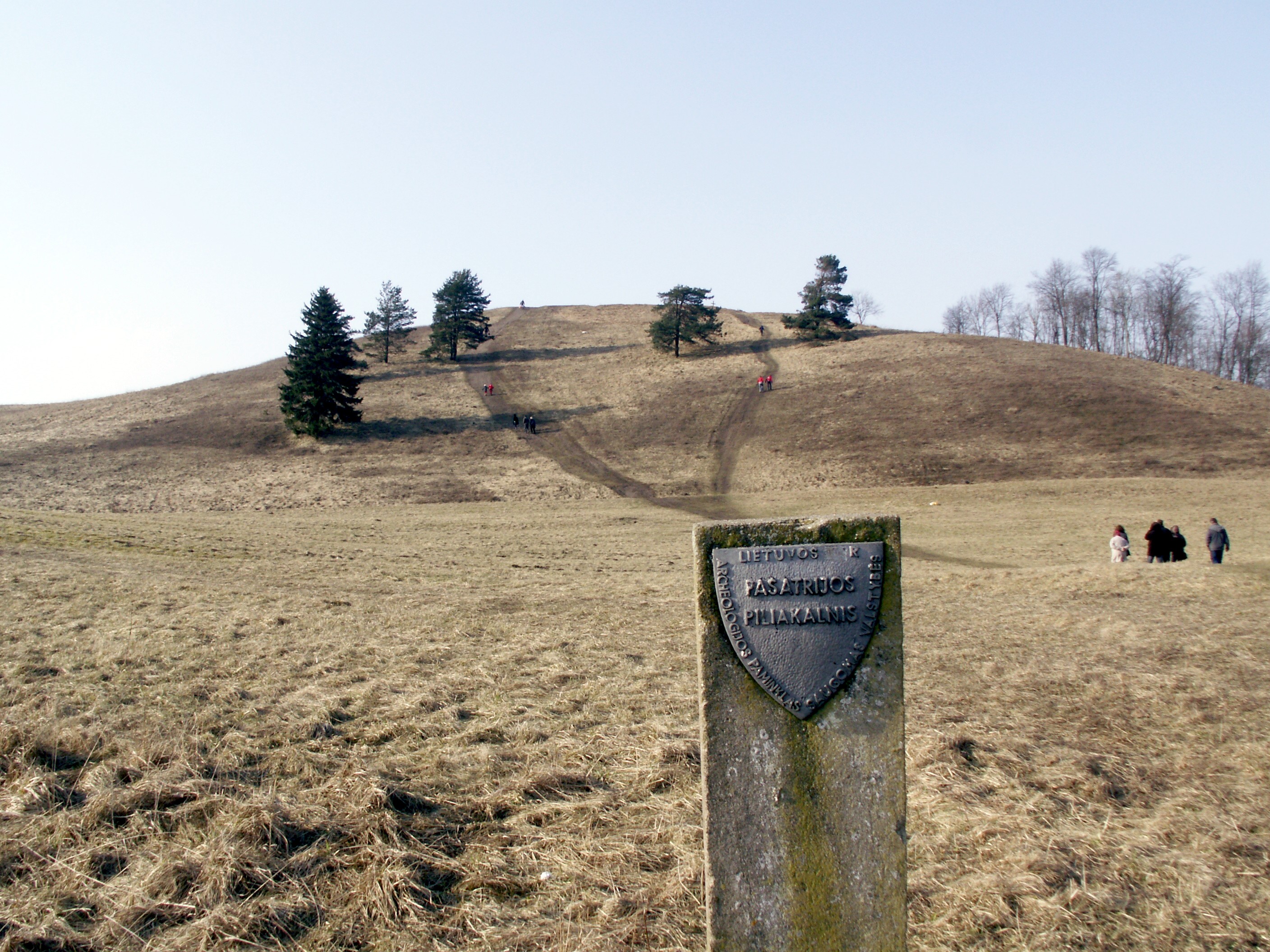Е atrija on:
[Wikipedia]
[Google]
[Amazon]
 Е atrija is a hill and a
Е atrija is a hill and a
"ЕЅEMAIДЊIЕІ ЕЅEMД–S" Magazine, 2004, no. 3 It is part of the Е atrija Landscape Reserve. The hill is in height and was formed during the last glacial period.
/ref>
hillfort
A hillfort is a type of fortification, fortified refuge or defended settlement located to exploit a rise in elevation for defensive advantage. They are typical of the late Bronze Age Europe, European Bronze Age and Iron Age Europe, Iron Age. So ...
in the Samogitia
Samogitia, often known by its Lithuanian language, Lithuanian name ''ЕЅemaitija'' (Samogitian language, Samogitian: ''ЕЅemaitД—jД—''; see Samogitia#Etymology and alternative names, below for alternative and historical names) is one of the five ...
region of Lithuania
Lithuania, officially the Republic of Lithuania, is a country in the Baltic region of Europe. It is one of three Baltic states and lies on the eastern shore of the Baltic Sea, bordered by Latvia to the north, Belarus to the east and south, P ...
, near the village, LuokД—
LuokД— (Samogitian language, Samogitian: ''LoukД—'') is a town in TelЕЎiai County, Lithuania. According to the 2011 census, the town has a population of 629 people. The Church of All Saints, LuokД—, Church of All Saints is located in the town.
Luo ...
'' seniЕ«nija'', TelЕЎiai District Municipality
TelЕЎiai District Municipality (, Samogitian: ''TelЕЎiЕ« rajuona savivaldД«bД—'') is one of 60 municipalities in Lithuania, containing the city of TelЕЎiai
TelЕЎiai (; Samogitian language, Samogitian: ''TelЕЎД“'') is a city in Lithuania with ...
."Jie slД—pД— ir gynД— ЕѕemaiДЌius""ЕЅEMAIДЊIЕІ ЕЅEMД–S" Magazine, 2004, no. 3 It is part of the Е atrija Landscape Reserve. The hill is in height and was formed during the last glacial period.
Archaeology
It is anarcheological site
An archaeological site is a place (or group of physical sites) in which evidence of past activity is preserved (either prehistoric or historic or contemporary), and which has been, or may be, investigated using the discipline of archaeology an ...
no. A1939K and a registered cultural monument
A national heritage site is a heritage site having a value that has been registered by a governmental agency as being of national importance to the cultural heritage or history of that country. Usually such sites are listed in a heritage registe ...
no. AR1199 of Lithuania with the official names "PaЕЎatrijos piliakalnis su gyvenviete" aЕЎatrija Hillfort with Settlementand "LuokД—s piliakalnis" uokД— Hillfort
The first excavations started in 1835, and the site was dated by the 1st millennium BCE. A wooden castle stood on its top at some time in 14th century. Researchers think that before the Christianization of Lithuania
The Christianization of Lithuania () occurred in 1387, initiated by the Lithuanian royals Jogaila, King of Poland and Grand Duke of Lithuania, and his cousin Vytautas the Great. It signified the official adoption of Catholic Christianity by Li ...
, an important pagan temple was located on the hill.
Name
The origin of the name is associated with a legend that this was the place of Samogitia'switches' Sabbath
A Witches' Sabbath is a purported gathering of those believed to practice witchcraft and other rituals. The phrase became especially popular in the 20th century.
Origin of the phrase
The most infamous and influential work of witch-hunting lor ...
. One day they danced too long, until the roosters' crows. All witches quickly flew away, but one misplaced her besom
A besom () is a broom, a household implement used for sweeping. The term is mostly reserved for a traditional broom constructed from a bundle of twigs tied to a stout pole. The twigs used could be broom (i.e. '' Genista'', from which comes the ...
(on which witches fly) and started running around shouting "Where is my ''ЕЎatra''?", hence the name (ЕЎatra is a twig from a besom)."Е atrija hillfort"/ref>
See also
* List of hillforts in LithuaniaReferences
{{DEFAULTSORT:Satrija Hill forts in Lithuania TelЕЎiai District Municipality Hills of Lithuania